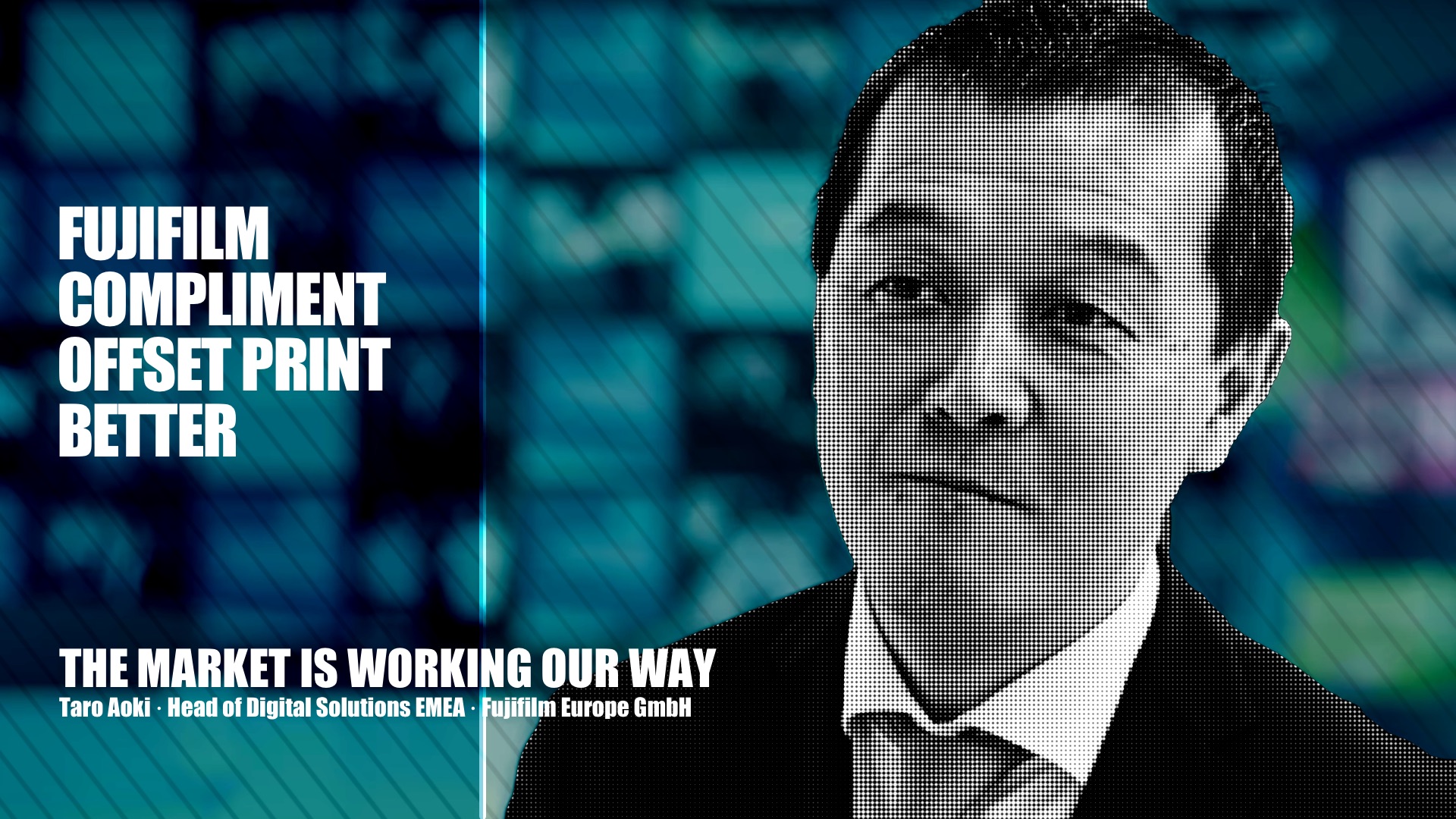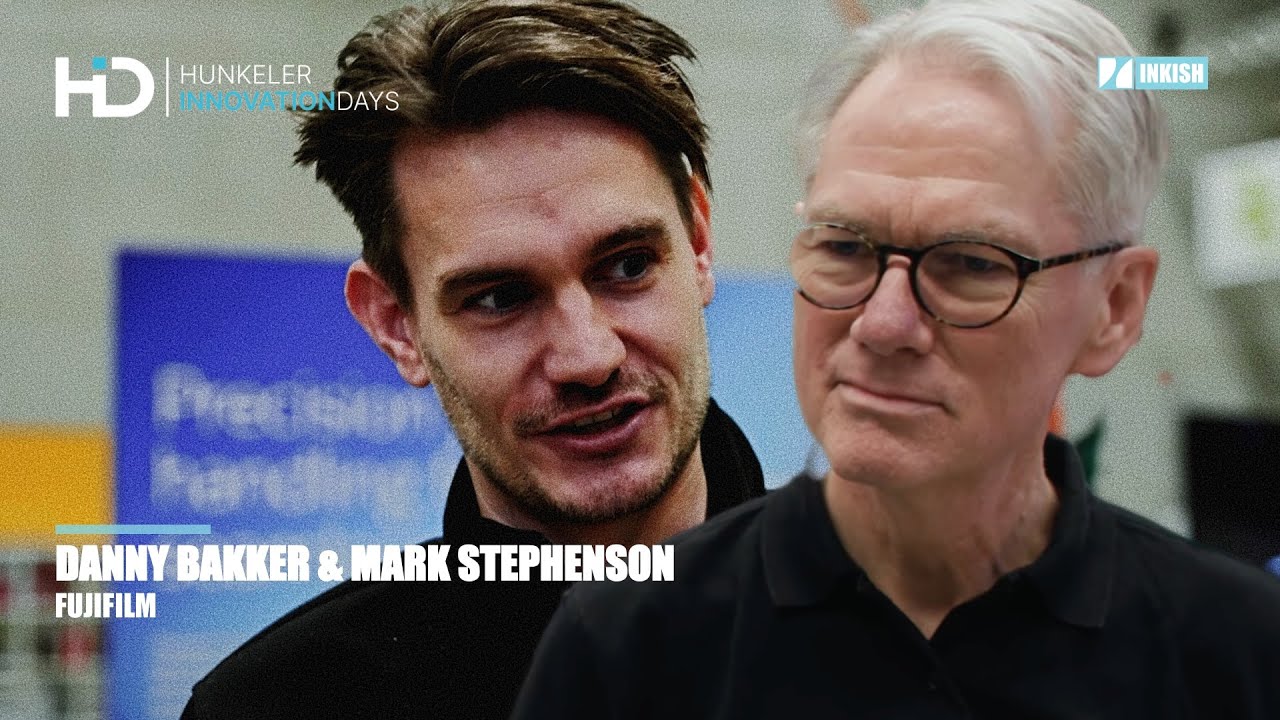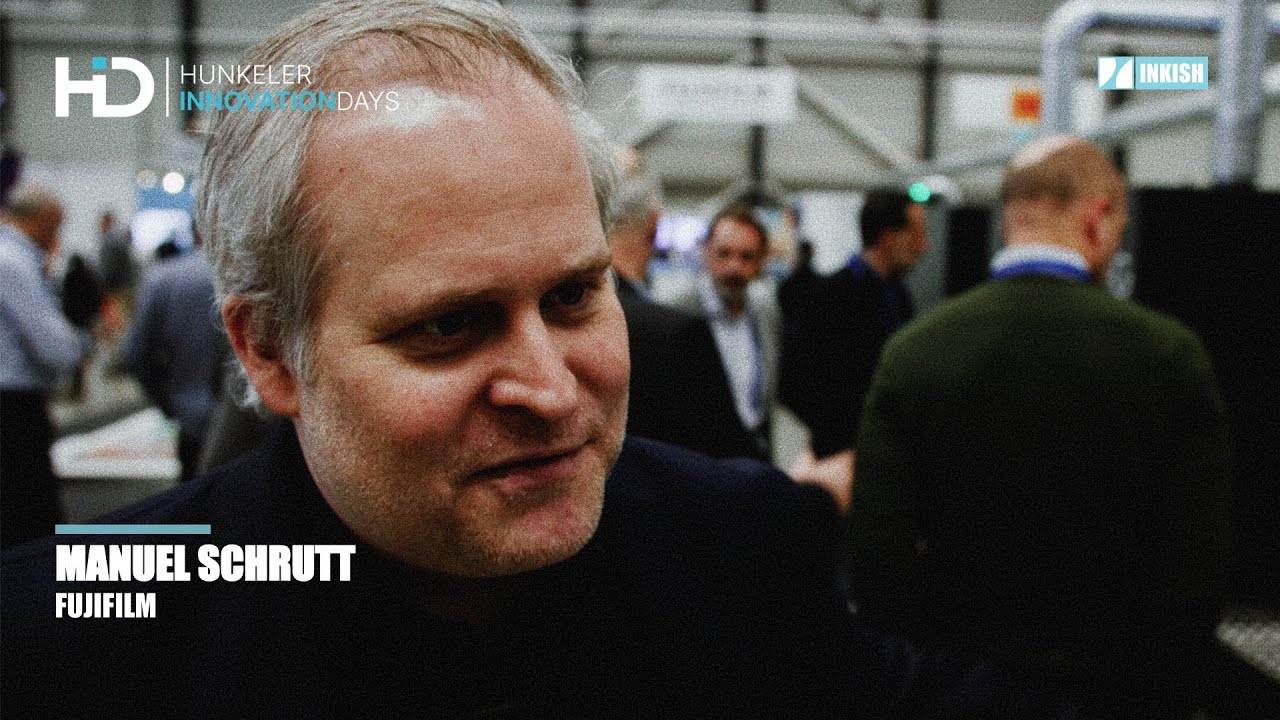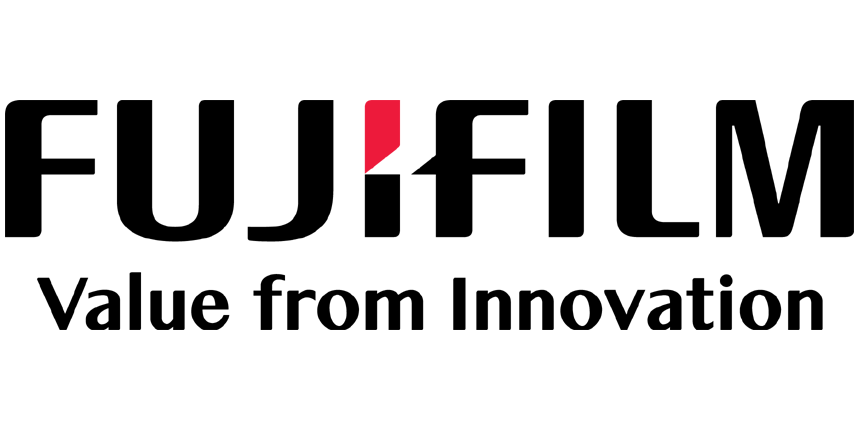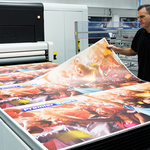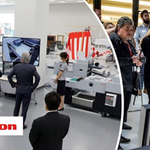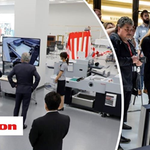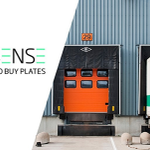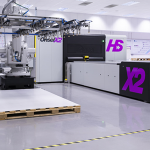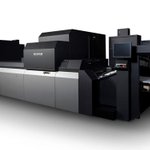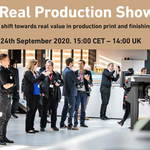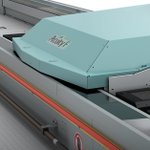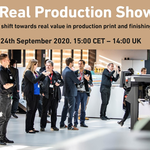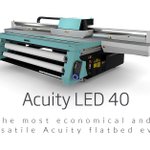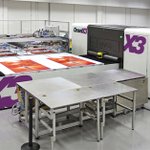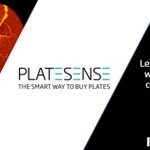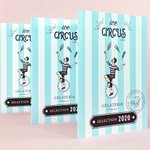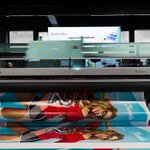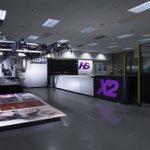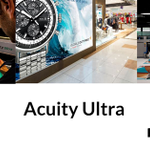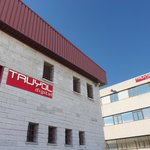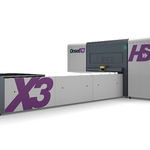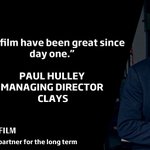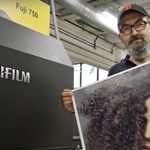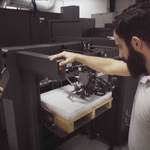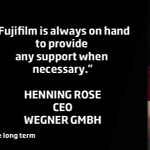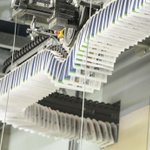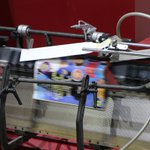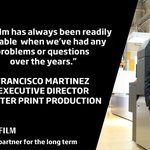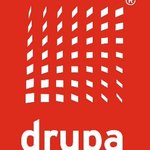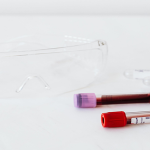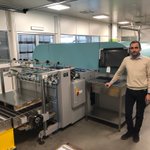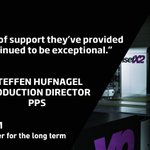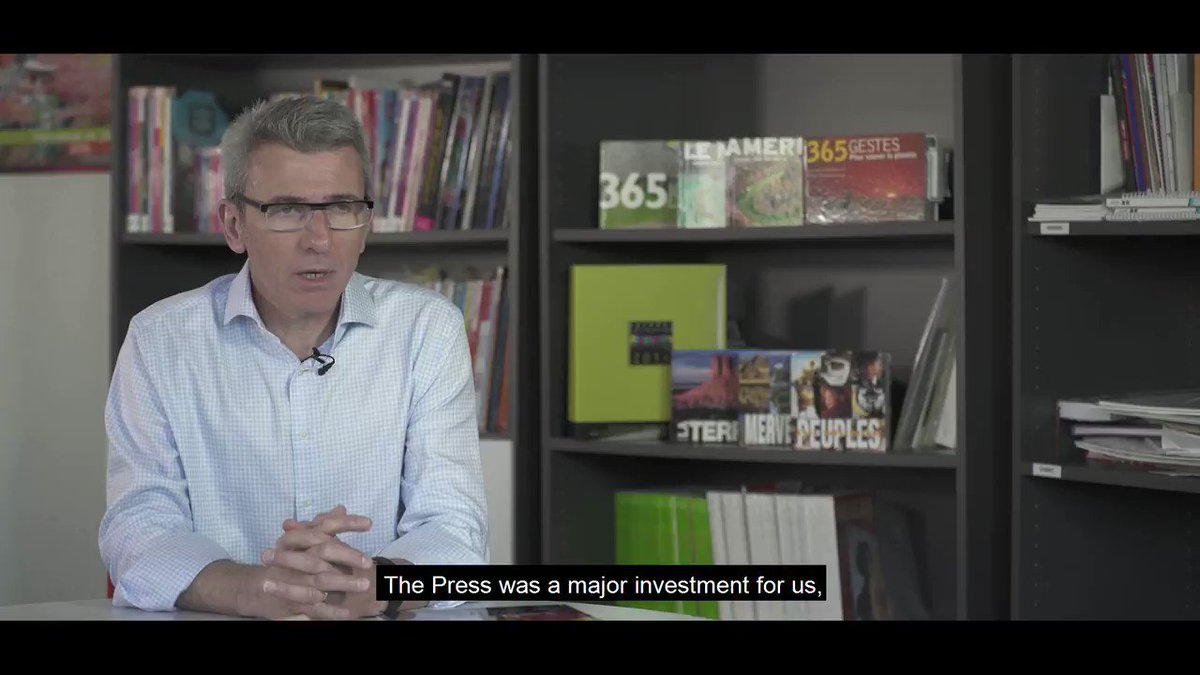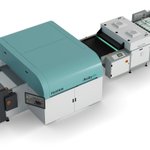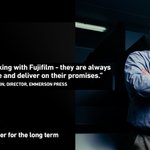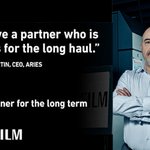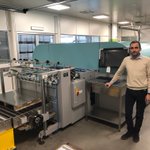Fujifilm Compliments Offset Better · Taro Aoki · Head of Digital Solutions, Fujifilm Europe GmbH
In the suburbs of Brussels in Belgium, you find Fujifilm Europes facility for education and demos, and INKISH was invited to go there to talk to Head of Digital Solutions EMEA Taro Aoki. Like always, we love these conversations since the length allows us to discuss in details. In this conversation, this takes us from German cars vs—Japanese cars to why the Fujifilm 720/750 is such a good match for many offset printers. Taro Aoki also talks about some of the things he believes Fujifilm could bring to market in the future.
As usual. Enjoy!
Taro?
Yes?
Thank you very much for taking the time to see me.
Thank you for having me.
And you just flew in your car directly from Dusseldorf?
Yeah, Dusseldorf. Yes, I am living there.
Okay. So what car do you have?
It’s a Volkswagen.
Okay. Okay. And it’s a good car?
I hope so.
Okay. I thought that being in a Japanese company, we just mentioned the Sony cameras, I thought you were using Japanese cars.
Yes, I would hope so. But the company give us only that.
Okay, so that’s when you get a high position, you would get a Toyota? But we are not about here to talk about cars, we’re about because you are responsible for your digital print in Fujifilm, right?
Yeah, in Europe.
In Europe, yeah. And when we talk to people like you, I think it’s always funny because you are in a market where there’s a lot of competition.
Yeah, sure.
So what is your view on competition in general?
It’s something hard, of course. However, once we see the competition, that is good, because now in the market all the market is looking for the digital press. So in the past of, you know, they’re always looking for the offset market and now everybody looking for that digital market. That’s good for us.
Of course, when the market is changing towards digital, obviously there’s a bigger interest and a bigger demand for this kind of products but there’s also a lot of vendors out there delivering systems today. Why should one choose to work with Fujifilm?
Like HP, like Konica-Minolta was the good experience for the POD media toner devices, which is used for purely digital. However, JetPress is designed for the offset. As you can see, the basement of that jet press is the offset, and just put our inkjet head technology on top. So from this sense, we are aiming that to provide a product into the offset market.
So you would say that when everybody in the industry talks about having inkjet replacing offset, your technology and your devices is basically easier for an offset company to replace?
I don’t like to say the word offsetreplacement. So we can support the part of the offset jobs by the jet press. Of course, we cannot, how can I say, contribute all of that long print run jobs.
No.
I would just only short run jobs that we can create the same quality, same technology, same delivery as offset.
I would say that you can to some extent maybe even have a better quality than offset. Right? Because I mean if you look at some of the print samples I’ve seen around here in the trade shows, your colors are really vibrant and and the dark colors are really dark, and it’s really stunning quality, because you know, I think that if you look at digital printing, both toner and inkjet based today, it is high quality, but they’re still like differences, right? Within the high quality, you are on the superior level.
Yeah, thank you very much for these words, and yes, they all, the customers, vote JetPress, are even saying that. They are developing the new business based on this unique quality, and these are very good and we also expand our quality range and we offer the customers a new quality business.
Yeah. Yeah. And the reason I’m asking you a little bit into this with the replacing of offset presses into digital, and the way that the jet presses operate, it looks like an offset machine, and as you said, you’d just replace the conventional plates and print heads with the digital print heads, but still when a traditional, let’s say, a traditional printing company, let’s say commercial printing company or packaging printing company wants to invest into digital, there’s a lot of different considerations to do before you invest.
This is true. But the point we see, the customers’ jobs, total jobs, some of the jobs are long run, let’s say, more than 3000 copies, and other is less than 3000 copies. But if the customer is always printing by offset, then we need to exchange the plate quite frequently. It is a kind of time loss. So if the customer can use the jet press, especially for the short line jobs, then the customer can use offset machines more efficiently. I mean, we’re only forecasting the long line jobs using by offset machines, and short line jobs by the Jjet Press
So the way you see your entrance to a printing company could be you have an offset press that you have, but you have some jobs that are less than 3000 that is not produced efficiently, and then you have some jobs that are more than 3000 which you produce efficiently, so you see not as much as a replacement or more like a complimentary to the offset prints?
I see, yes. I want to say that too.
Is that the cause of the price point of the equipment or is it because of the technology or why is it that you see it as a complimentary rather than a replacement?
Actually, still, our ink price is not so cheap compared with the offset ink.
Okay, so that is one of the reasons why you would change the setup, so when you look at using a digital press, your setup cost is zero, you have a capital cost in the equipment, but your operating cost still is more expensive per sheet.
Per sheet, yes.
So that is where you have the crossover, when can it be more affordable to do the offset press as compared to the digital?
Yeah, so always the customer if king, the cost of the sheet. So that’s why more than 3000 sheets.
So you should just make cheaper inks, Right? Then you can sell more machines.
It could be, yeah, that would be a dream. But so far, we cannot do that.
I guess that when everything comes to pricing of equipment and ink, it’s like it’s also, I think, maybe it’s also a kind of relation that you believe where your value is, right? Because you, when you offer the inkjet ink at this price, it’s because it is still valuable for the customer, up to a certain level. Right?
I think so and I also trust so. So that’s why a lot of the customers, now more than 200 or close to 250 customers is using the jet press in the worldwide. So the customer is already convinced. I hope.
You still have a potential of about 300.000,-450.000 Customers left, right?
Yes, sure, sure. That’s our target.
That’s your target? So you’re busy these days, right? When you look at a press like the JetPress 720, which I think is a very popular machine, and now your recent machine, 750, what is your typical customer? Who is your typical customer?
So it’s a very difficult question because the customer is using jet press as he likes, they’re not typical. Yes, not typically only a calender or only a brochure, not like this. The customer is printing quite a huge number of the applications include packaging. Probably the capability of the jet press is quite wide.
So you would say that it can be both commercial printers and packaging printers and maybe even digital printers just need to have the large format?
Yeah, sometimes yes. Almost the reason I think, yes.
So when you, for example, when you go to drupq are you at drupa are you targeting specific segments or you’re mainly showing the technology and then leave it to the market to understand the applications?
I think recently, the purpose with the drupa has been changed. They used to be just showing the technology, but now they’re more trade show. So from this sense, I trust the current jet press 750 is much with the customers’ demand, more market demand. So I think that we will promote how widely jet press can support the application.
Okay, so you can show that it can do from this to this application and then show the diversity that this is possible?
Another specific topic we need to promote widely, any kind of application we can print.
Yeah. When you look at both the 720 and the 750, I think that it’s not a complaint or anything, but I think that some of the people that I spoke about the presses, they think, and you say also that it is looks like a conventional press, but is it, from your perspective, a downside on the machine when you can only print on one side at the time?
They will say that.
But I understand that it’s because the ink needs to dry before you can print on the other side.
That’s the one the reasons, yeah. The biggest reason. But by the 750, we improved the drying performance. That’s why we can quickly turn the papers and print the backside. No waste time. So from this sense, we possibly can develop the duplex machines. However, once we see the market be to offset market, almost all the machines are printing.
Yeah, yeah. They’re not perfection presses, basically. Yeah. And I think it makes sense, because since you are addressing a market where you are complimentary to offset presses and offset printing companies are used to have like one pass and then turn and go through, I was just thinking, because a lot of people in the printing industry, when they talk digital, they talk about a fast turnaround time and a lot of job changes and variable data. You seem to be somewhere in the middle, right? Because of course you can do variable data, but if you still have extra processes, I was just thinking that it must be, for one side of the applications, like packaging and for a lot of different print applications, it may not be an issue. But I was just thinking that you could sell more machines, right? I think that 250 sounds like a great number because I know it’s a premium machine, but I guess you want to sell more?
Yeah, I think so.
You hope so.
I hope so, yes. If the customer accepts or market accepts. But now the trend is the going to the digital and a lot of customers accept that quality and the [inaudible 00:11:30] of the jet press. So I would see more sales [crosstalk 00:11:33].
So do you think the quality is what drives the sales on the jet press?
Partly. Partly. More than that, so when we see the customer, the uptime is most important. So of course, the quality is one of unique selling points for the customer’s point of view. However, the reliability is a daily job with them. So [inaudible 00:12:00] current jet press [inaudible 00:12:02] is quite good, and the reputation from the customer is always perfect. So from this sense, we also focusing more to get better reliability than now.
So what, what is the reason why you are not selling more? Is it expensive, is it difficult to get in touch with people or why is it? I’m not questioning that. It’s a nice number that you have. I’m more curious because there are so many printing companies out there and I guess there’s a lot of people that need a digital engine.
So let’s say four years ago, the customer or market is still looking for what is the future, but now all the customers understand that digital is the future. So could be at the next drupa that we will get a lot of terrotories and a lot of interest interest from the customers, then we have a good opportunity to talk with a lot of customers. And then I hope the number of installations will be increased.
I think you’re right that the need in the market is changing. So of course there will be, but I still think that from my first question there’s a lot of competition. So in your opinion is so that when you get the opportunity to talk to customers and when you get them in and see the press, is that where you convince them? I mean, you know, if I give you a business card, I think, “Nice business card, nice photo. It looks like you and everything is good,” but it doesn’t make me buy. But if you show me the press that actually did this one, made it, maybe that could convince me or? What is it that makes people convinced about it? Because now we spoke about quality as one thing, but if you go to drupa is it when you get people at your booth and you talk to them, is that the turning point for conversation?
It’s a similar topic as we discussed, the media jet press can support wider applications. So if the customer is doing only the jobs which currently they have, then they cannot expand their business. Once the jet press is installed, then they can use jet press more other applications, which we did with another business. Another revenue. So from this sense, it’s good for the customer to invest.
I’m not looking for any other answers, but the reason I’m asking is because, I mean, to be honest, don’t you think that what you’re saying about the wide number of applications, that applies to other inkjet machines as well? From other vendors? So I’m just trying to figure out why should people specifically talk to Fujifilm?
Well, you know, we are also providing our technology to the PrimeFire from Heidelberg.
That’s a good selling point, isn’t it?
Yeah. Yeah. And it’s a good for the Samba Print Head. The reputation of the Samba head is very good and that’s why they already put them in JetPress. So sometime the customer wants to buy the jet press or either the PrimeFire I think all the customer demanding the high quality, high reliability is one of the very big, important keywords, I think, to enter our machine, our digital machines into the markets.
Okay. Now I have asked you enough times about that. Taro, from your perspective, and being placed in Europe, how does the future look for Fujifilm and jet presses?
It’s a really good question. I also want to know. As I say, now the offset market as well as the package market industry, the printing industry is now accepting the inkjet, that digital press is a future. So I think, yeah, from two years’, three years’ range, a lot of the customers will acquire the new equipment, at this time, that they will select the digital press, and then could be the quality and finishing procedure by the digital press will be a common or standard with the future. I think. So then, of course, the offset machine to be continued to be used in their business. However, for instance, the current break even point, 3000 sheet, could be increased. 4000 sheets, 5000 sheets. But even though still 10000 sheets, 20000 sheets, the job is available. But a portion of the digital is growing up.
So what you foresee is that with the higher number, or bigger interest for the machines and a wider base of your technology in the market, it will eventually, also, because some of the offset machines, if they are not replaced, they will be slower compared to digital and they would be not as good quality compared to digital. So what you’re saying is that over time you see that the break point between volume will grow for digital, meaning that offset machines will be replaced at some time?
I have to say it will happen. It will not happen within the 10 years.
So it takes time?
Yeah, it takes time, because the offset is already a proven technology, and a lot of the customers are using these offset machines as his business. So digital is just a starting point. So from this sense, I think, ten years more we need.
So where do you see, from a technology perspective? Are we moving towards faster machines or?
Could also could need more resolutions.
More resolution?
I think, I think. The same as a camera, I think.
So it will still be even better image quality, you believe? What about some of your toner based competitors like Ricoh and both HP and Xerox are producing more colors like gold, silver, neon colors also, is that also a future you see for Fujifilm?
Yes. Sometimes we consider about this, for the package segment, because they need a Pantone solution. But when we see only the commercial market, actually our gamut, color gamut of our ink is quite wide.
Yeah, so you can emulate a quite big percentage of Pantone colors?
Yes, that’s right.
Okay.
So that’s why actually the extra color is another cost for the customer.
Yeah.
That’s why if we can produce the similar color by the four colors it’s less cost for the customer.
So would you say that with the jet presses you are able to simulate a higher percentage of Pantone colors than some of your competitors?
That’s right.
Because I was with Canon, I think it’s two years ago, in Florida, and I was a little bit surprised because I got a book written by Elizabeth Golding from INKJET Inside, and when I read it, it was like you said, that inkjet presses in general have a lower gamut then offset presses, and I thought it was the opposite. I thought it was much bigger on inkjet presses.
I think depends on the color management software itself and how we can create the dot simulation. So our technology is not only the ink gamut itself, so the software, it creates the wider gamut, and also the no banding everything comes to our software technologies.
Yeah, because yesterday I had the opportunity to talk to your colleague, Mark Stephenson, and he told me that one thing is the printhead, but it’s also the controller software that controls the dot sizes, the drop sizes. So it’s like it’s not just the printhead, it’s also all the technology behind it?
That’s also our strong point. We are controlling everything, the ink software and hardware.
When you look at the printheads, and we will take a look a bit later, but when you look at the printheads that you, for example, have on display over here, it’s just sometimes, from a layman’s perspective, like how can you do it? I mean it’s so many chips.
–
So for you as well? Because I mean there must be so many things that should work together to get that ink into these little tiny drops and to make it there fast and it must be quite a challenge to develop?
Yeah, I want to say this is thanks to our R&D. Yes.
Yeah. And it’s funny because when you look at the printhead, it looks more like a computer today.
Yeah, yeah. Could be.
Yeah, it could be. So Fujifilm, you of course develop the Samba printheads, but you also develop all the software and the technology used to control it.
As well as the ink.
As well as the ink, yeah.
So the three important elements we are developing by own.
Is that your key to success that you control the entire?
I think so. To achieve the good quality, good reliability, always the three element is important. So once the ink is wrong, then even though we use the good head, the quality was bad. It’s bad. However, we combine everything, control everything, then we can achieve the good quality, good reliability and we prove the jet press.
It must be fun to be in your chair to have R&D that is so fantastic?
Yeah.
And have equipment that output is fantastic print?
I have to be proud.
Yeah. Yeah. I mean because I think that most people go to work with pride because they work with products they can trust, but you are still, I think that Fujifilm and the jet presses, you’re still pushing the boundaries, and as you say, even though you’re pushing the boundaries, you still have options, opportunities for improvements, right?
Yeah.
So it’s like two sided printing. It’s like even a higher resolution, maybe even more colors, maybe even faster.
Wider sizes.
What about smaller sizes? Everybody talks about the big things.
It’s also interesting.
Because one of the things that I looked at, the printhead, that basically you can stack as many as you want based on which application you want it to be.
Very flexible, to achieve the sizes.
Yeah, that’s fantastic. So when you look at the market in Europe, we talk about it as a growing market or growing potential at least. Do you think you get your fair market share? It’s an unfair question isn’t it?
I’m not satisfied yet, but I try to do that.
So are you in range level with your budgets and your planning, or are you more optimistic for the future? Or less optimistic, when it comes to unit sales? Or how do you see that?
So optimistically, there is always a thing to dream, but for instance, only this year, after introduced of the 750, we will achieve the 60 or 70 unit of the yearly base.
That’s not too bad, is it?
Yeah. So from this sense, I think, I hope that we’ll be growing up, more installations. The customer is willing to use jet press, and jet press will become the standard of the printing industry, I hope.
That’s great. Thank you very much, Taro.
Thank you very much. Thank you very much.
Nice to talk to you.
Nice to talk to you. Thank you.


















Mon April 1st
Increased Productivity using CERM and ESKO ·...
Increased productivity is extremely important - and yes, CERM and ESKO play an enormous role with the Sicialian label producer Auroflex. Still, the business is developed around a quality and passion for supporting the Sicilian wine, food, and luxury products industry. But Auroflex does many things that are a bit out of the standard, for example, an annual design competition, where designers are invited to challenge Auroflex - and all the designs are produced to show what's possible - and as Fabio Butera tells INKISH, this develops a close relationship between Auroflex and the designers, that eventually will make some of the most complex and interesting design. Auroflex produces labels in both flexo, digital, and offset. The most important reason for investment in print technology is from Nilpeter - an offset/flexo hybrid machine - by all means, an amazing company, and see how CERM and ESKO are used in planning, pricing, color management, and, of course, inspection - in tightly integrated solutions - merging beauty with efficiency - love it.












































